Last Updated on July 8, 2022 by
Are you a textile fan? Then, Anokhi Museum is an unmissable place to visit in Jaipur. It gives a hint of the history of textiles in Rajasthan.
I have an unexplainable love for traditional Indian prints and if I am shopping, I will probably pick a handcrafted piece of clothing over modern designs.
A visit to the Anokhi museum is one of the must things to do in Jaipur. Anokhi is a Jaipur based clothing brand having outlets in many cities of India and abroad. It is popular for its traditional hand-block printed fabrics and garments.
Dedicated to the art of handmade, Anokhi museum in Jaipur showcases the best of block printing and the best-talented artisans. The sheer beauty of the cloth, complexity of process and skill of craftsmanship are showcased in the museum.
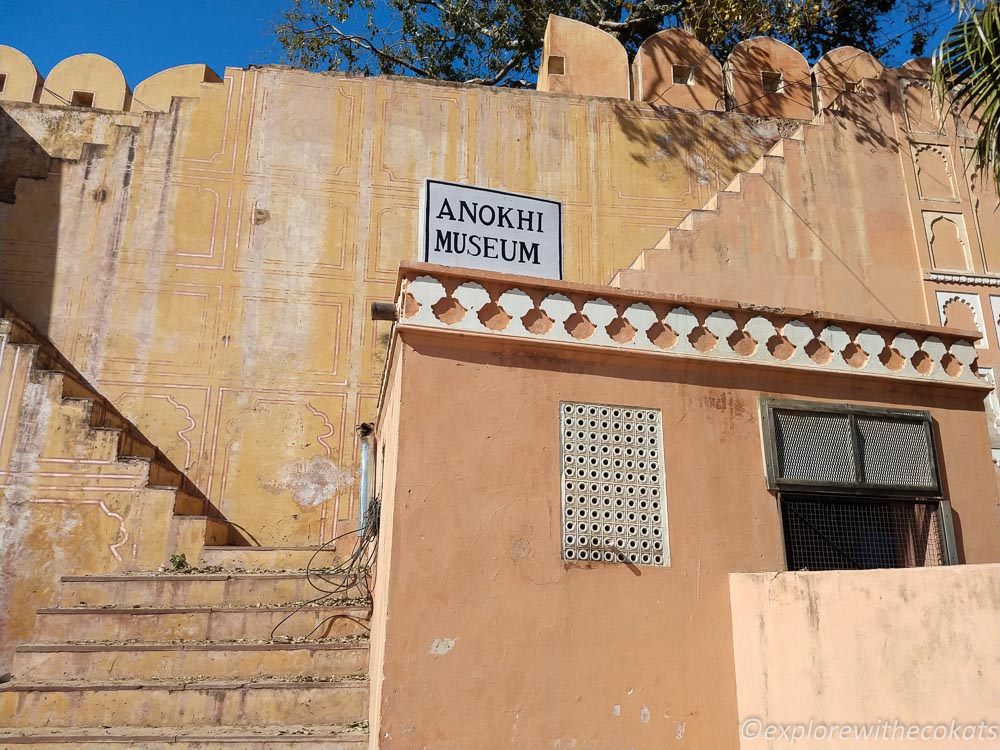
Table of Contents
History of Anokhi Museum of Hand Printing
Anokhi is a Hindi word which translates to ‘Unique’. Anokhi Museum was curated to represent the traditional art forms of hand printing by showcasing its history, process, and techniques. The museum also wants to create awareness about the unique art and educate the new generation on taking it up.
The museum building is the 16th century Haveli situated on the outskirts of Jaipur near the Kheri gate of Amer Fort. The dilapidated Haveli was purchased by the founder of Anokhi, Mr. John Singh in the 1970s and the restoration work started on it. The Haveli was restored in four years under the guidance of heritage architects using skilled craftsmen to bring it back to its original grandeur.
The Havel housed a hand-embroidery unit for the local women until the year 2005 where it was open for visitors as Anokhi Museum of Hand Printing. With its efforts to restore the art and craft form, the museum earned a UNESCO award for ‘Cultural Heritage Conservation’ in 2000.
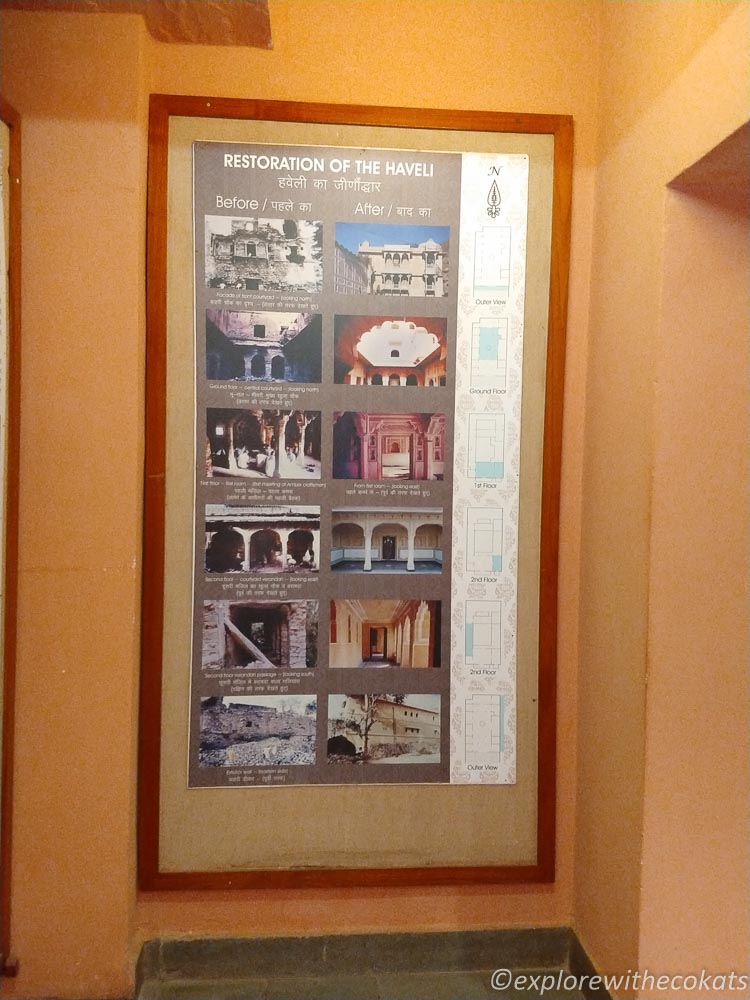
Preserving the crafting process at Anokhi Museum
India’s expertise in natural and vegetable dyes dates back to ancient times. The finding of dyed cotton fabric pieces dated to the Indus Valley Civilization proves the existence of hand-printing as an art form in India more than five millennia ago.
India enjoyed a virtual monopoly in the production of dyed, painted and printed textiles for a long time. Till very recently, all hand-printed techniques included the usage of natural dyes only. Block printing and Tie-Dye techniques were the first hand-printing techniques to emerge in India.
Technological advances and fast fashion are leading to the threat to these traditional craft forms. Anokhi Museum has documented and continues to document the work of traditional communities and how to preserve them.
The team is always looking for new craftsmen and techniques to develop new garments in the main workshop on the outskirts of Jaipur. The exhibits in the museums share the story of these communities.
Hand printing on textiles using various tools is one of the most traditional forms of art, which involves decorating cloth or garment with a print pattern. The print pattern uses natural dyes from the backyard making it one of the most sustainable practices.
In India, several hand-printing techniques have flourished over the centuries. Indian printing techniques are diverse and includes: Bagru, Bandhani, Dhabu, Kalamkari, Ajrakh, Leheriya, Sanganeri, and Batik.
Love Hand-made crafts and products? Give this a read: Chendamangalam Handlooms from Kerala and Sabai Grass Handicrafts from West Bengal.
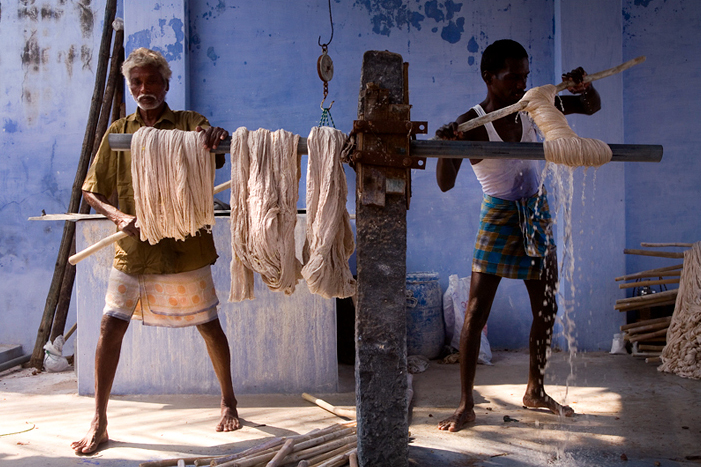
Hand printing and Sustainability
Hand block printing is dependent upon clean, mineral-rich water to create colours from natural dyes.
Due to pollution in the river, the only freshwater resource in towns which make this art, the mineral content changes which ultimately changes the end colour on the garment. The withering of colour from the garment is also faster.
Though water filtration systems are effective, however, it takes the environmental concern to establish the system. Not all craftsmen understand the importance of setting up (in)expensive filtration systems for their small-scale craftsmanship process.
While the chemical balance in water doesn’t affect the printing process, the overall well-being of river water affects this water-dependent process.
The concern is even more as many craftsmen are shifting to using chemical dyes which are not only traditional practice but harm the environment and their own health in the long run. Though chemical dyes are banned unless they have regulation and pass the stringent environmental standards, the silver lining, in this case, is public demand for sustainable textiles using environmental practices.
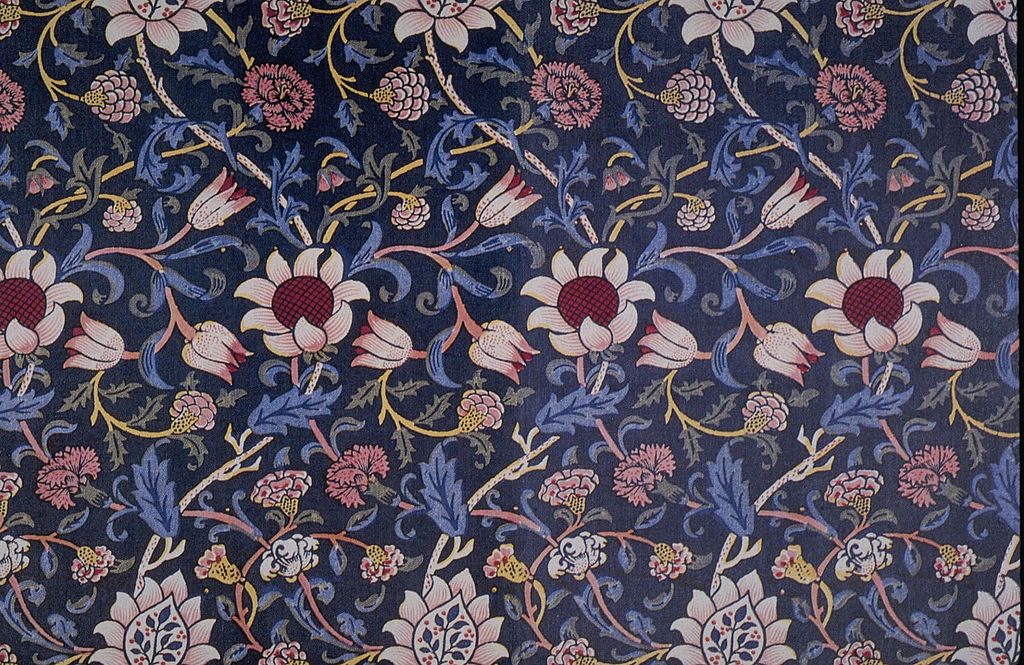
The Anokhi Museum experience
After buying entry tickets at the entrance a huge courtyard welcomed me with cool air. The drastic temperature difference was soothing and made me realize the importance of traditional buildings.
A staff member pointed us towards the way around the museum and then it was a walk around the history of the museum and the goal of starting and maintaining the museum.
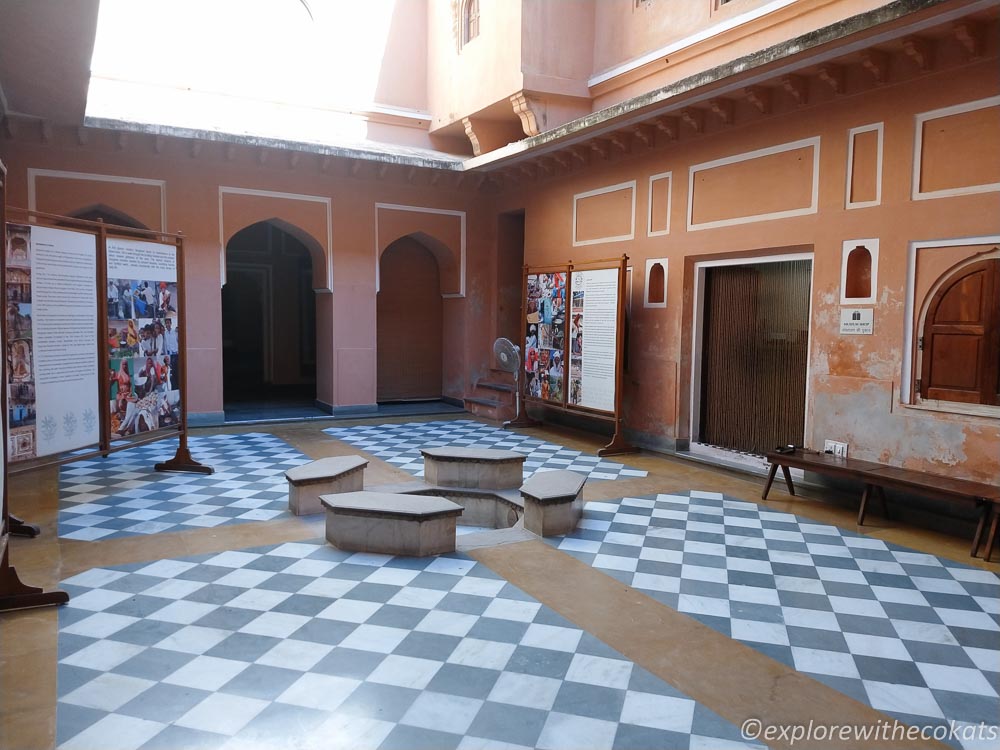
Exhibitions and Collections at Anokhi Museum
From the techniques of carving into the block, to the dyeing process of the garment, the collections took me to various historic roots of block printing and designs, which evolved over time. The galleries highlighted the various range and complexity of this craft including the traditional dress, which is worn even today, as well as home furnishings. The collection included vintage and modern printed fabric, supplemented by carved blocks and related tools and photographs.
More than 100 garments and blocks are on permanent display in the galleries across two floors. There are ethnic designs and patterns, and also Western clothes in traditional prints.
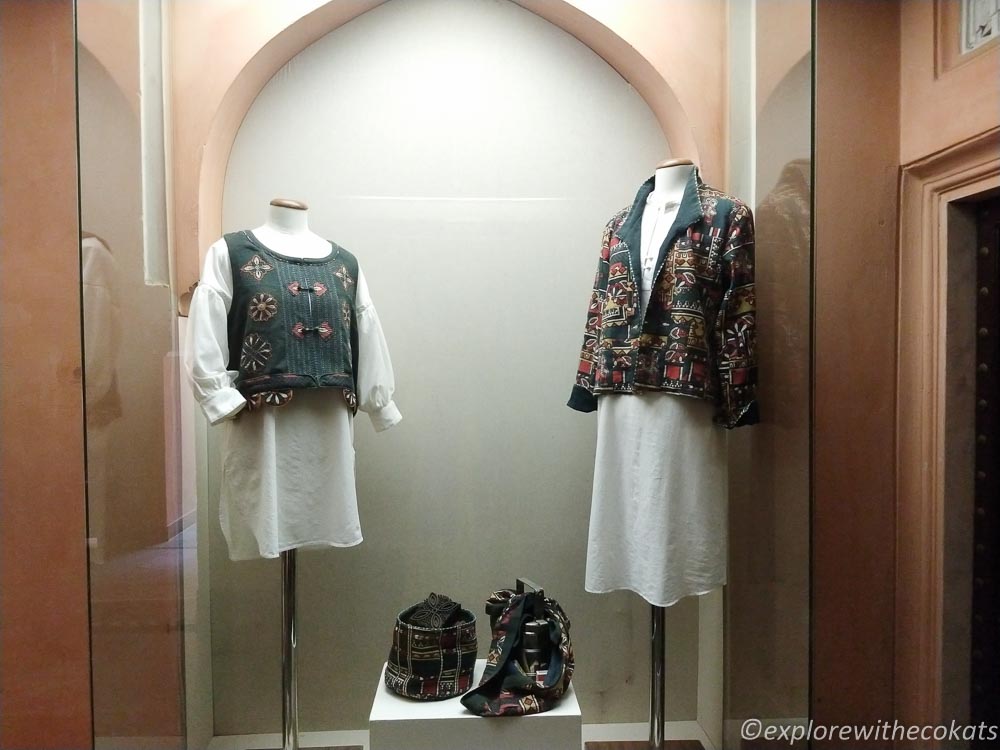
Hand Block Printing Process
Step 1: Making of blocks
Designs are finalized that need to be printed on the garment. Most often the designs are traditional Indian motifs like paisley but others are inspired by nature, beliefs and customs. An artisan traces the chosen motif onto a wooden block, usually made of teak wood. Alternatively, rubber and linoleum are also used in making blocks. Each block is hand carved using various tools by the artisan. Blocks take several hours to a few days to complete depending upon the intricacy of the design.
Once the design is carved, the blocks are treated with oil and set aside to soften. This makes the block hold colour before printing.
These blocks are then used to print the pattern onto fabrics using natural vegetable dyes like indigo, pomegranate rind, and turmeric, in vibrant blues, reds, and greens.
Step 2: Preparation of fabric
The artisan prepares the fabric by washing it. Traditionally the fabrics were washed in local rivers to make it mineral-rich. This also made the block printing process highly sustainable, because it reduced water consumption.
Traditionally, the cotton fabric is torn by hand and scoured with soda ash. It is then washed and thrashed repeatedly to remove natural oils and starch, then it is treated with a mixture of cow dung and castor oil for bleaching. The final step makes the cloth a pale yellow after it is introduced to the myrobalan nut bath for incorporating tannins. This is a 2-week process!
Step 3: Dyeing the fabric
Third, the fabric is dyed its base colour, laid flat on a table, and fixed firmly to the table with pins. Although small variations in the printing are part of what makes Indian block print fabrics so special, a single unwanted movement can result in smudges or uneven printing which means starting over again.
Step 4: Coloring
The artisan mixes together four or five basic, natural colours to create a multitude of dyes. The artisans then apply the colour to the block and press it hard on the cloth and sometimes even strike it hard with a mallet to create an impression. This step is repeated to darken the impression. This hand printing is carried out throughout the length of the fabric.
Step 5: Dyeing
Lastly, once the dye has dried, the completed block print fabric is rinsed in a local river. The block printing process concludes by hanging the fabric to dry in the sun. Just as the method of washing reduces water consumption, this sustainable method of drying the fabric minimizes energy consumption for a smaller environmental footprint than many manufacturing processes.
Display showing step by step printing process on a garment
A display in the museum made me understand the whole process was the step by step process of the block printing process. The journey of grey cotton cloth from various processes to the finished product is noteworthy.
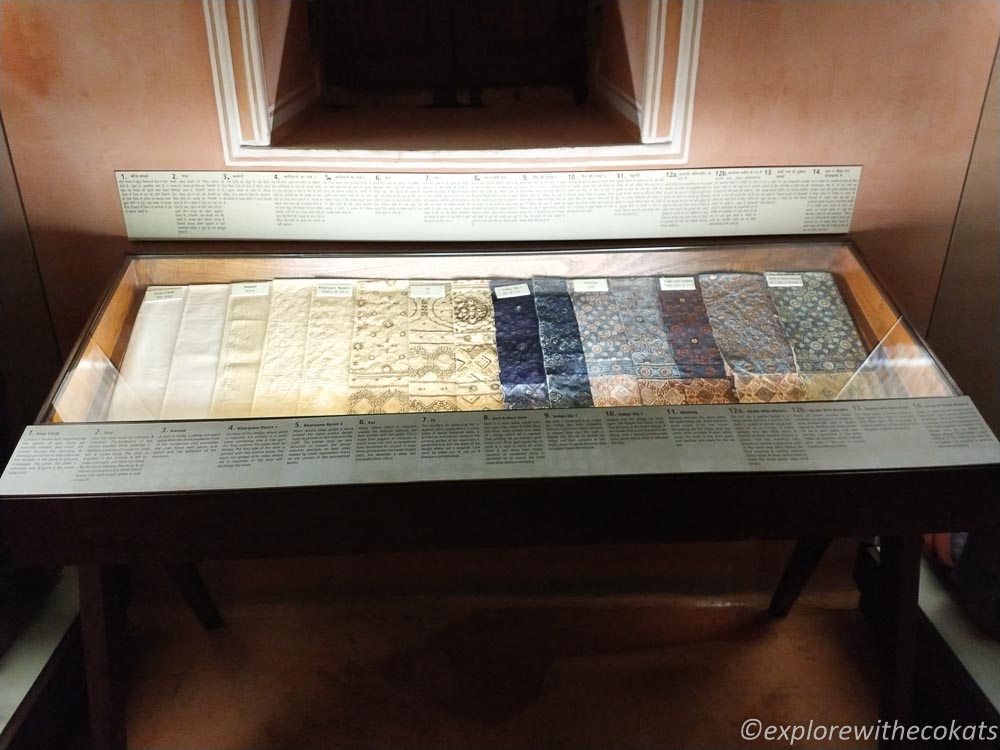
Noteworthy pieces of the display not to be missed at Anokhi Museum
Jajam
A traditional durry or a thin carpet was used in yesteryears for floor seating. Jajam has been called the people’s textile as they were often communally owned and played a vital role in the social life of a Rajasthani village. These intricately crafted textiles were personalised for each community to accommodate community gatherings in a village or, for guests coming to a life ceremony.
Jajam designs are inspired from local architectural designs as well wildlife of a region such as tigers and elephants.
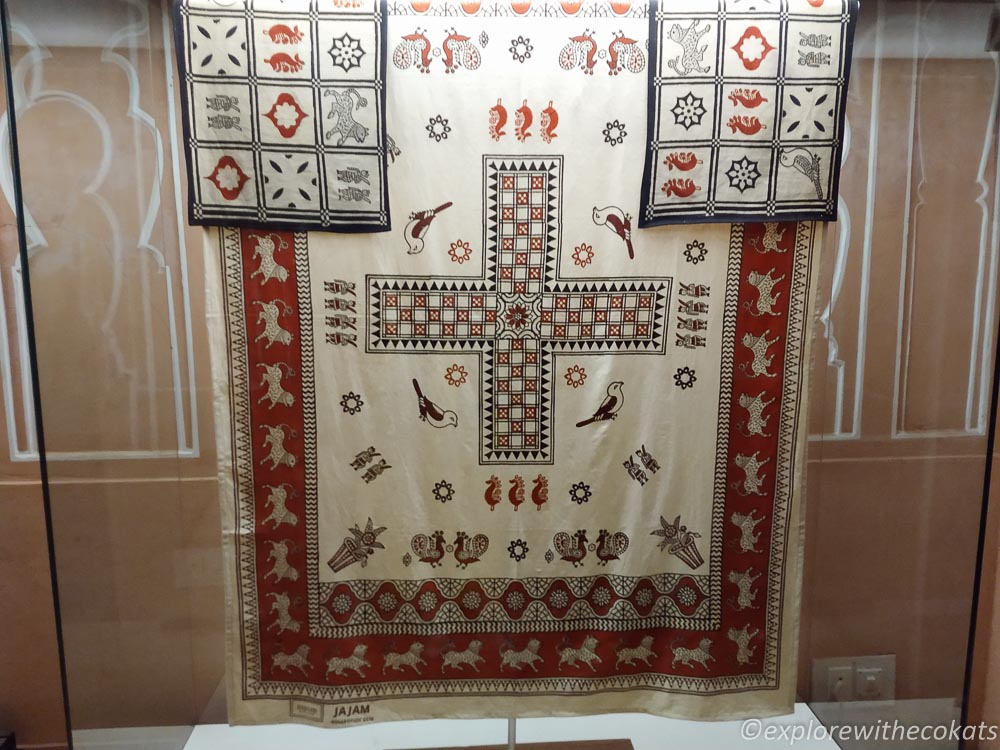
Hand Block Printed Blankets
On the second floor, there are two galleries exhibiting “Focus on the Collection: Bichaunis: Blankets;” and “Bakst.” Bichaunis are hand-stitched blankets or quilts that, under different names, are widely used across Western India. In rural Gujarat, they are often made of recycled cloth patched together. and quilted with long running stitches. The bichaunis here are Anokhi re-interpretations—new printed cloth with plain cloth on the reverse, stitched together by women in Barmer. They are simply arranged, hanging on bars inside a row of elegant display cases.
In “Bakst,” a square-ish room contains five displaycases with vibrantly dressed mannequins.
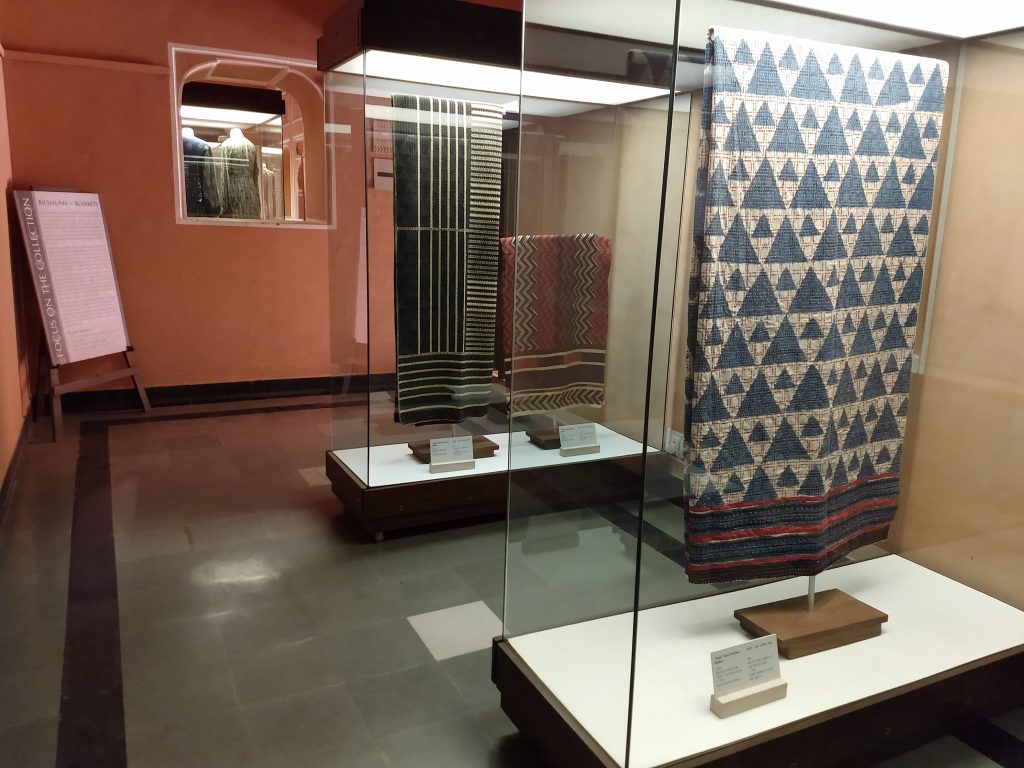
Live demonstration at Anokhi Museum
I moved from one gallery to another uncovering the information related to block printing. I finally came to the top-most floor of the museum which houses other permanent displays of regional textiles, dye and print processes, and block-making. It also has areas set aside for tools, blocks and demonstrations of block-making and printing.
There is a DIY T-shirt counter where you can choose a design, block print on it, sundry and take it back as a souvenir. This comes as an extra cost of INR 250 per t-shirt.
I struck up a conversation with the artisan and asked him a couple of questions. He offered me to try the block printing process. I was happy to print this handkerchief which he happily asked me to carry with me as a souvenir. Check out other souvenirs from Jaipur that are worth buying!
There is a mini auditorium to view daily film programmes featuring short documentaries and slide shows. I decided to miss it and end my tour.
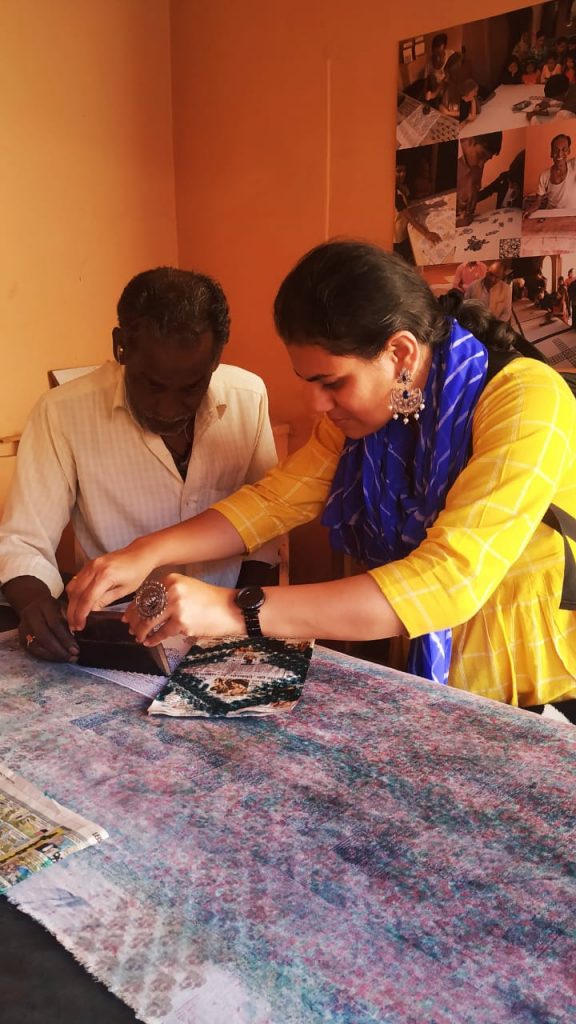
Workshops in Anokhi Museum
Anokhi museum offers a 2-day course in block-printing and wood-carving to visitors and enthusiasts who are keen on learning the process. There are many activities which suit different types of participants ranging from school groups to tourists.
The Anokhi Museum tour ended with the souvenir printing and I climbed down the staircase to explore the Anokhi shop.
Anokhi Museum Shop
I was already smitten with the labour that goes into making vibrant and intricate block printing designs on a garment. It was clear that I fell in love with the products and garments in the Anokhi shop. The products range from diaries, files, garments, stoles and many many more. The variety is amazing and almost what you would see in city shops of Anokhi. You can buy Anokhi kurtis from Anokhi shop Jaipur.
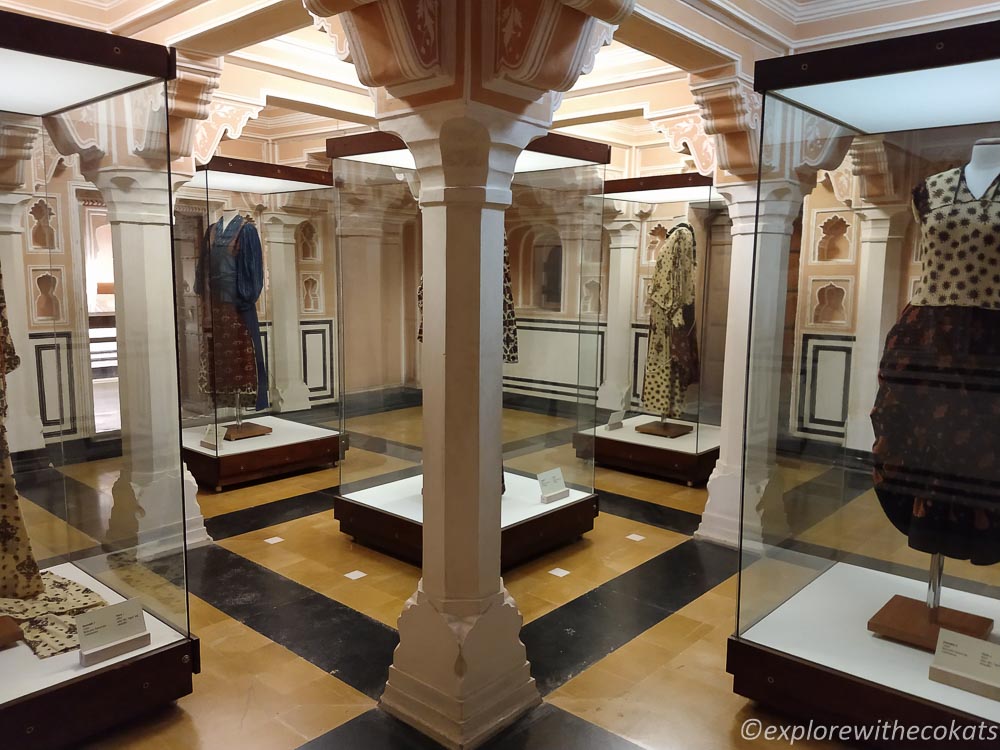
Is Anokhi Museum worth the visit? My Takeaways
As a block printing enthusiast, I absolutely enjoyed visiting the museum. The displayed garments are beautiful and reminded me of the incredible richness of India’s textile culture. The exhibitions and galleries are thoughtful, and informative and portray the history of the art in the best way. The museum is well placed to increase awareness of block printing and the cultures that have traditionally made and used it in the past and in the present. I found the museum to be a gem.
I highly recommend visiting the Anokhi Museum for art, culture and heritage lovers for an enriching experience.
How to reach Anokhi Museum from Amer Fort?
Take the left turn from the Amer fort exit towards the north. You will cross the Amer town and keep walking towards Kheri gate. You will cross Bihariji temple opposite the Panna Meena ka Kund to reach Anokhi Museum of Hand Printing on your right.
Anokhi Museum timings
Anokhi Museum is closed on Mondays.
Tuesday – Saturday : 10:30am – 5:00pm
Sunday: 11:00am – 4:30pm
Note: The museum is closed each summer between May 15th and July 15th for gallery maintenance.
Anokhi Museum Ticket Fee
Anokhi Museum’s entry fee is INR 80 per person. This fee is valid for foreigners too.
Sustainable tips and reasons for choosing hand block printed textiles from Anokhi Rajasthan
- When you buy a hand-printed textile instead of a mass-produced garment, you are respecting the art and years of experience of the artisans.
- When you buy a block-printed textile, you are feeding the family and helping the artisan’s children for a good education.
- You are participating in celebrating the ecological integrity of nature, plants and people.
- You are choosing an environment-friendly and sustainable art form for your daily consumption.
Read More Rajasthan posts
- Places to visit near Eklingji Temple, Udaipur
- Jawai Leopard Safari
- 3 days Udaipur itinerary
- Kumbhalgarh – Second longest wall in the world
Pin this article!
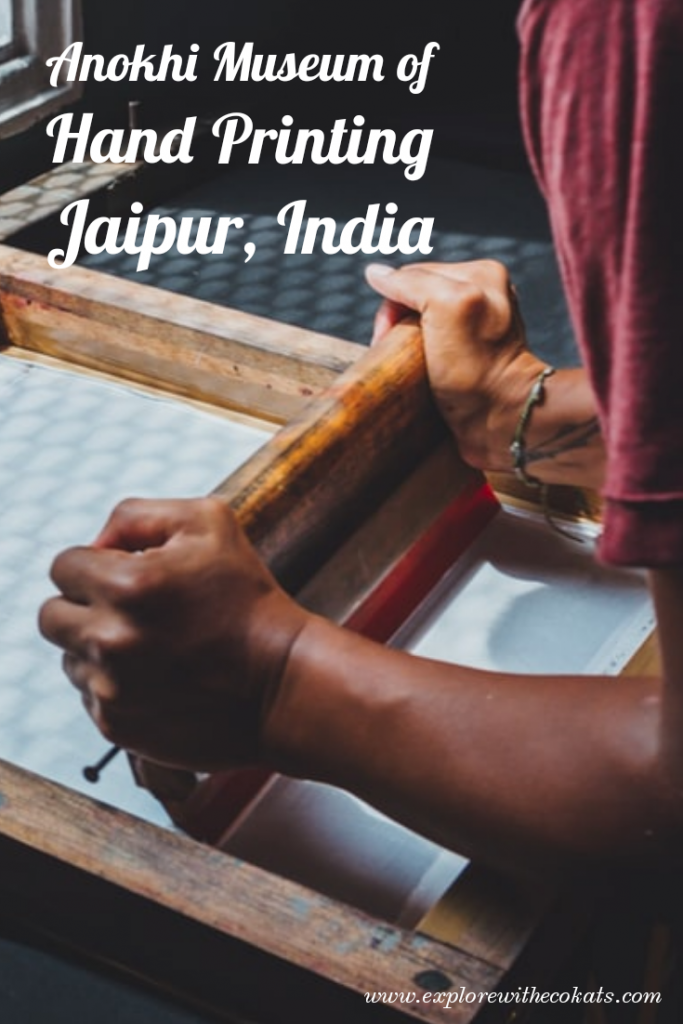
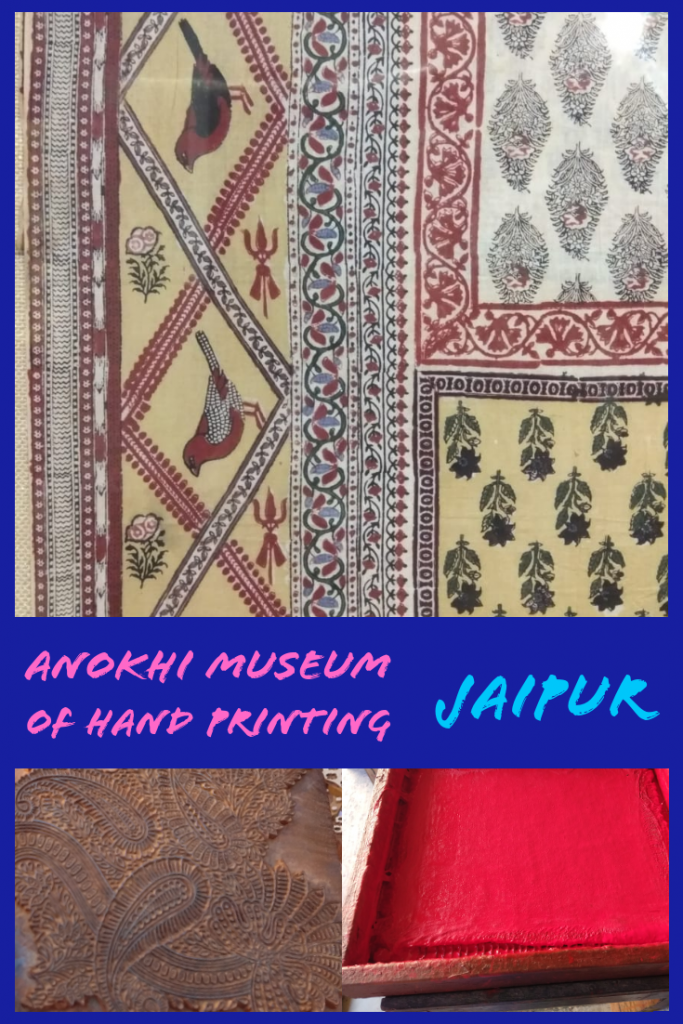
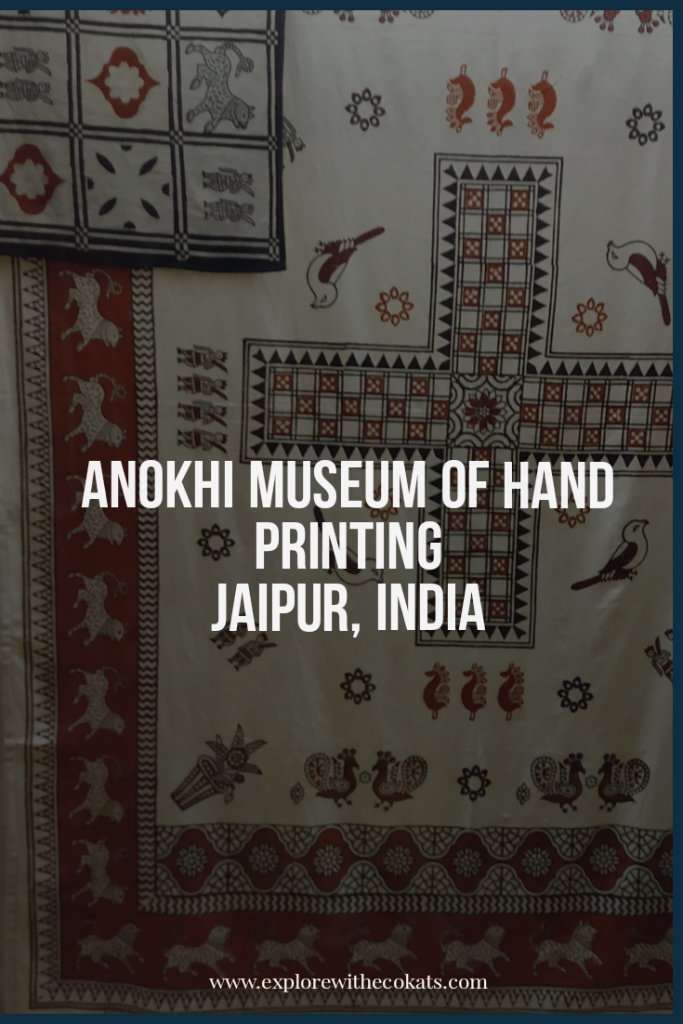

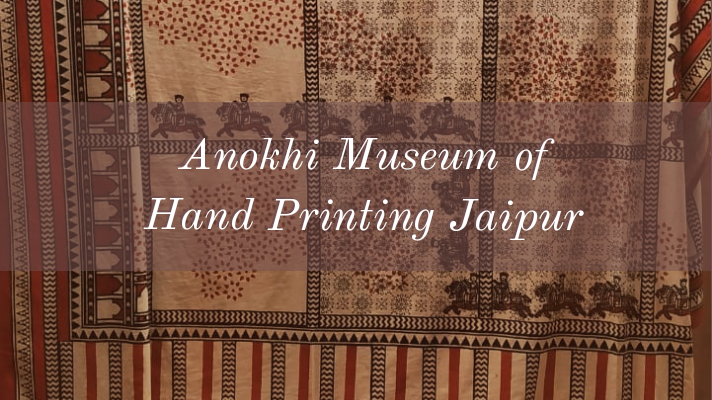
36 comments
Hi
truly an interesting article, somehow in India we have so many unique handicrafts and ti generally takes a visionary to set the ball rolling in order to preserve and sustain it, thereafter sometimes the government takes over. Out here also I feel it is the same. Had an interesting read, thanks
Thank you, Sumit. You are right, it takes efforts to save a tradition and I am glad whoever is doing their bit to save the hand block printing are doing a fab job. No wonder the fabric is so chic these days 🙂
Wow I have learned so much from reading your post! This is so rich in history and information, thank you for taking the time to share this with us
Thank you for your kind words, Lydia. I am trying to make people aware of this forgotten art so that it gets chosen over fast fashion.
Very cool, I’m sad to have miss this when I was in Jaipur!
There is always a next time to strike off places once missed. I hope you can come back to Jaipur.
The DIY block printing sounds like fun. It’s always nice to be able to take part in a process after learning about it.
Oh absolutely. It was so much fun! 🙂
The Museum looks really interesting, so great that you got to print your own handkerchief too!
That is one souvenir I will never let go off of and even use it! 🙂
How very cool. So I am going be very honest, the idea of fashion and textiles or blankets and stuff usually is neat but often I space out and walk away. That is until I went to Morocco and saw the famous tanners and blanket makers in action. So I can only imagine seeing the Anokhi museum in Jaipur would offer some neat insights into the fashion & blanket or other textile designs of India. Those Hand Block Printed Blankets look absolutely beautiful and I am sure Darcee would love to try one of the hands on interactive classes in the museum too!
I love live demo sessions, give so much insight into the process. Makes us so much appreciate the efforts of the artisans.
This museum looks sooo fantastic! I try to visit local museum whenever I travel, and this is right up my alley! The block prints are just so gorgeous. I am going to have to be cautious though, because I will be tempted to spend a lot of money in that giftshop!
Haha tell me about spending money! I just didn’t carry money as I knew I would spend all, especially after seeing the designs and process.
I agree, the traditional pieces are just gorgeous and much more meaningful than a modern, mass-produced item. The situation with the chemical dyes is so scary. It’s fascinating to learn about the traditional process and watch it come together before your eyes.
Yes, it was insightful even for me. Also, there is something special about handmade 🙂
I love the cultural and historical stories to textiles as I’m always fascinated to learn more about traditions and customs in other countries. When I was younger I toyed with the idea of studying anthropology for this reason, but after my MA English Literature, I figured it was better for my career perspectives to study Communication. However, other people’s stories have always fascinated me and I do love visiting such heritage museums and sights. So thank you for this blog post and beautiful photos. That’s so cool you got to keep the handkerchief too! 🙂
Thanks, Zarina. Though I have loved all these fabrics for years, it was special for me also to it come together in front of my eyes. I appreciate the art even more now.
I can see why you loved this as a block printing enthusiast! I know very little about block printing (other than it is much harder than it looks) and I STILL think this looks like great fun. Jaipur is such a fantastic place full of surprises. 🙂
Do you still use the handkerchief that you printed?
It’s stashed safely as a souvenir. I still haven’t had the heart to use it, but maybe someday 🙂
As an absolute fan of South Asian textiles, thank you for this article! Unfortunately I haven’t gotten to visit India yet but if I ever do get to visit Jaipur, this museum will be on top of my bucket list!
Plus it’s cotton which is so soothing to the skin it’s like a second skin in the scorching Indian summers. And yes, you must visit Anokhi museum whenever possible!
I love Visiting this Museum as it depicts history of textiles. If my travel destination includes textiles of that particular region, I surely don’t want to miss it and Anokhi was also such Place. Like Gujarat, Rajasthan is also famous for its textiles, Anokhi is giving better idea of how Block Printing Works and small demonstration gives better idea about it. I missed visiting Sanganer which has factories of Block Prints, better next time.
I had the same thoughts Mayuri. I will definitely go to Sanganer next time.
Ketji, that was quite an interesting tour of the Anokhi Museum. Handprinted textile from India like the kalamkari example you showed is fabulous.
Thank you Carol 🙂
Beautiful! I’m a big fan of these block printed fabrics. There is an Anokhi Jaipur store in Chennai where I bought them from, not sure if they are in someway connected to the musuem. Will have to visit when we make it to Jaipur someday.
That’s an interesting post ,I would love to visit this museum n experience block printing. Thanks for sharing
Jaipur looks like such a gorgeous place! I love everything about it that I hear, and can’t wait to visit when this is all over.
What a fascinating place. Beautiful materials. This would be an interesting place to visit with so much to see and learn. I can see why you were enchanted.
Such an informative article, I think it is always amazing to learn about crafts and textiles from around the world!
this is so interesting – thanks for sharing!
Ketki, I absolutely loved reading all about the process of making the tradition Rajasthani prints including the process of making blocks, fabric, dying, printing, post-treatment. Having grown around these traditional prints we would easily take them for granted. It’s eye opening to see the details and effort! Thanks again.
Thanks Jyoti. It was an eye-opener for me too. I mean I knew efforts went into it but did not know so much!
Loved all the different prints! This seems like a really unique museum to visit!
[…] where Fashion meets Sustainable Textiles – Explore with Ecokats (2020). Available at: https://www.explorewithecokats.com/anokhi-museum-jaipur-where-fashion-meets-sustainable-textiles/ (Accessed: 10 October […]